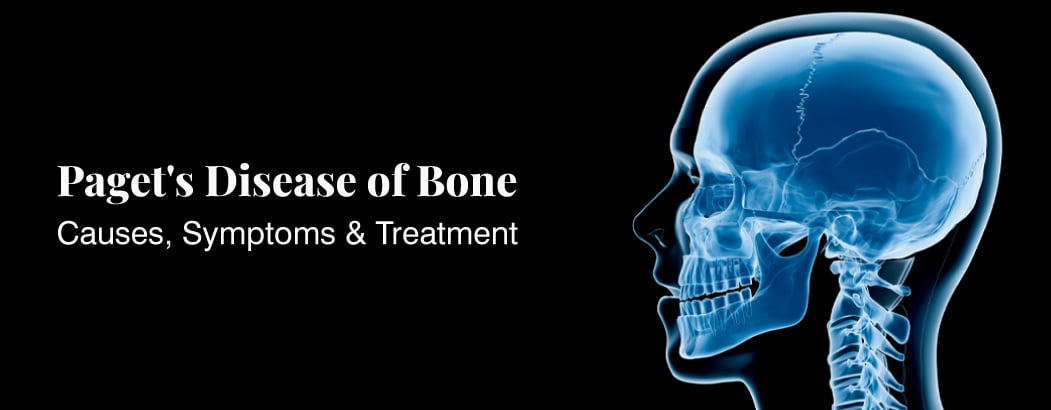What is Paget’s disease of the bone?
July 7, 2023

The human body is an intricate network of interconnected systems, and our skeletal system plays a vital role in providing structure and support. However, there are times when this complex system can be affected by various disorders, one of which is Paget’s disease of the bone. This condition, named after Sir James Paget, who first described it in 1877, is a chronic and often painful bone disorder that impacts millions of people worldwide.
Understanding Paget’s Disease of the Bone
Paget’s disease of the bone, also known as osteitis deformans, is a chronic disorder that disrupts normal bone remodeling, leading to abnormal bone formation. It typically affects individuals over the age of 55, and though its exact cause remains unclear, researchers believe genetic and environmental factors may contribute to its development.
Causes and Risk Factors
The precise cause of Paget’s disease remains elusive, but several factors have been identified as potential contributors:
- Genetic Predisposition: A family history of the disease increases the risk of developing Paget’s disease.
- Viral Infection: Some studies suggest that a viral infection, specifically by the paramyxovirus, may trigger the onset of the condition in susceptible individuals.
- Age: The risk of Paget’s disease rises with age, and it is more commonly diagnosed in individuals over 55.
Symptoms of Paget’s Disease
During the early stages, Paget’s disease may not exhibit noticeable symptoms, and some individuals may remain asymptomatic for years. As the disease progresses, various symptoms may emerge, including:
- Bone Pain: Pain, typically described as a persistent, dull ache, is a common symptom of Paget’s disease, usually localized to the affected bone.
- Bone Deformities: The abnormal bone remodeling can lead to misshapen bones, particularly in the legs, pelvis, spine, and skull.
- Fractures: Weakened and enlarged bones are more prone to fractures, especially in weight-bearing areas.
- Hearing Loss: Skull involvement can result in the compression of cranial nerves, leading to hearing loss.
- Nerve Compression: Enlarged bones may compress nerves, causing tingling or weakness in the affected area.
- Reduced Height: Spinal involvement can lead to curvature of the spine and a subsequent loss of height.
Diagnosis
Diagnosing Paget’s disease involves a combination of clinical evaluation, imaging tests, and laboratory analyses, including:
- Medical History and Physical Examination: The doctor will discuss symptoms and medical history and conduct a physical examination to identify bone deformities or areas of tenderness.
- Blood Tests: Elevated levels of alkaline phosphatase, a marker of bone remodeling, may be detected through blood tests.
- Imaging Studies: X-rays, bone scans, and MRI (Magnetic Resonance Imaging) can visualize the affected bones, identify abnormalities, and determine the extent of the disease.
- Biopsy: In some cases, a bone biopsy may be necessary to confirm the diagnosis and rule out other bone-related conditions.
Treatment Options
The management of Paget’s disease aims to alleviate symptoms, prevent complications, and improve patients’ quality of life. Treatment options include:
- Medications: Bisphosphonates, such as alendronate, risedronate, or zoledronic acid, are commonly prescribed to slow down bone resorption and reduce pain. Calcitonin and other medications may also be considered in specific cases.
- Physical Therapy: Physical therapy exercises can improve mobility and strengthen muscles, providing better support to the affected bones.
- Assistive Devices: Canes, walkers, or braces may be recommended to reduce pressure on the affected bones and prevent falls.
- Surgery: In severe cases or when complications arise, surgery may be necessary to stabilize fractures or correct deformities.
when and who to consult?
If you suspect you or someone you know may have Paget’s disease of the bone or are experiencing symptoms such as persistent bone pain, bone deformities, fractures, hearing loss, or other related issues, it is essential to consult with a healthcare professional. Early detection and timely treatment can help manage the condition effectively and prevent further complications.
Who to Consult
- General Practitioner (GP): Your first point of contact should be a general practitioner or family doctor. They can conduct a preliminary evaluation, review your medical history, and perform a physical examination. If they suspect Paget’s disease, they may refer you to a specialist for further evaluation and management.
- Rheumatologists: Rheumatologists are doctors specialised in diagnosing and treating musculoskeletal disorders, including bone-related conditions. They have expertise in identifying Paget’s disease and providing appropriate treatment.
- Orthopaedic Surgeon: If you have fractures or severe bone deformities due to Paget’s disease, an orthopaedic surgeon may be involved in your care. They specialise in surgical interventions related to bones and joints.
- Endocrinologist: As Paget’s disease involves bone remodelling, an endocrinologist may be consulted to assess hormonal imbalances that could be contributing to the condition.
- Radiologist: If imaging tests, such as X-rays or MRI, are required for diagnosis, a radiologist will interpret the results and provide crucial information to your treating physician.
When to Consult
You should seek medical advice if you experience any of the following:
- Persistent bone pain that does not improve with rest or over-the-counter pain relievers.
- Unexplained bone deformities or changes in bone structure.
- Frequent fractures, especially without significant trauma or injury.
- Hearing loss or other neurological symptoms related to the skull.
Early diagnosis and intervention can help manage the condition effectively, alleviate symptoms, and prevent complications. If you have a family history of Paget’s disease or are over 55 years old, regular check-ups with a healthcare professional can also help monitor your bone health and detect any issues early on.
Remember, it’s essential not to self-diagnose or ignore potential symptoms. Consult a qualified healthcare professional for an accurate assessment and personalized treatment plan.







